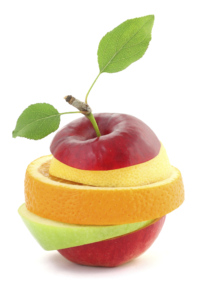 What in the world does “clean eating” mean? No sauces or gravies? No pesticides or preservatives? The definitions and ideas about this healthy lifestyle can vary, but here’s what you may need to know:
What in the world does “clean eating” mean? No sauces or gravies? No pesticides or preservatives? The definitions and ideas about this healthy lifestyle can vary, but here’s what you may need to know:What to Eat
Clean eaters are healthy eaters. Their food choices are simple and haven’t been overly processed or altered by humans, like:
• Whole vegetables, fruit and grains. Anything from a plant, bush or vine that’s not pre-cooked or pre-packaged
• If you eat meat, lean meat, fish or poultry (organic, grass-fed, wild or cage-free)
• Complex carbohydrates, like whole grain brown rice and quinoa
• Lots of water and tea, a minimum of 8 glasses a day
What to Avoid
There are different degrees of what clean eaters will and won’t eat. Some don’t eat any dairy or gluten or are strict vegans. Each clean eater decides what’s best for them, but they often avoid:
• Processed and packaged foods such as bread, pasta, cookies and items containing white sugar
• Anything that is fried, high in trans fats or saturated fats
• Products with long lists of ingredients, chemicals and preservatives
• Alcohol, unless you occasionally enjoy a glass of anti-oxidant rich red wine
• Dairy and animal fats
When to Eat
Instead of eating three traditional meals a day, clean eating requires you eat multiple small ones. Whenever you can, try to include lean proteins like tuna or steel cut oats and complex carbohydrates like apricots, oranges or plums.
Tips and Tricks
Here are a few useful things to know that will help you start eating cleaner.
• Set realistic eating goals based on your style—if you think you’ll be more successful starting with baby steps, choose breakfast and snacks as a starting point, and then ease into eating cleaner foods.
• If you think you’ll find more success with an aggressive “cold turkey” approach, clear out your pantry, refrigerator and freezer. Discard the multi-ingredient, pre-packaged choices and plan replacements for them.
• Give yourself a do-over when you need it. If you make non-clean choices at one meal, don’t feel like you’ve totally failed—forgive yourself and make a cleaner choice next time.



Leave A Comment
You must be logged in to post a comment.